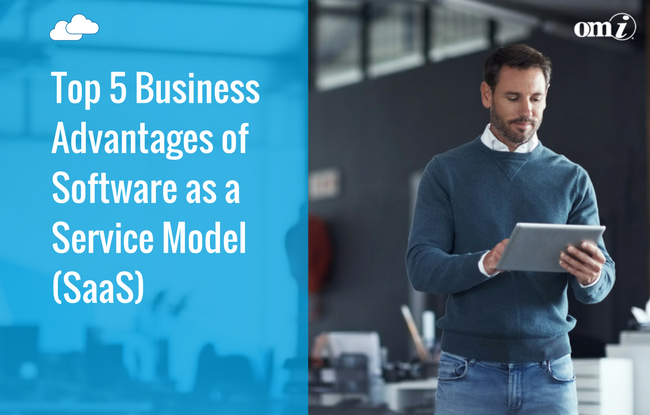In the past, the only way to get any IT assets was to purchase and install it, and the in-house team needed to maintain the infrastructure. Although the purchase of enterprise systems is a one-time only expense, the upkeep is a continuous process that demands constant resource investments. Because of that, the costs associated with running on-premise systems tend to be incredibly high.
This all changed with the introduction of the SaaS (Software as a Service) model to the industry. With SaaS, the user doesn’t pay for the software itself, only for a subscription. Think of it as your Netflix account, each month you pay for the service and have access to it.
Like in most models, there are multiple subcategories like Platform-as-a-Service (PaaS) or Infrastructure-as-a-Service (IaaS), but the names really never caught up, probably because the abbreviation is a little bit confusing and not as catchy. So, most commonly, people still refer to it as SaaS platforms, despite having its own unique abbreviation.
But the central question is why this particular model took the market and is now pretty much a standard practice? Well, there are a couple of reasons.
Software Installation
SaaS has none!
Literally, there is no need to implement anything into your IT infrastructure, if you want just to use the service. The beauty of cloud technology is that you can access software anywhere with only Internet connection. The situation changes a little bit when you need a service to be integrated with other systems. Not every platform can be easily integrated with every application, which may require additional effort from the part of your IT team or a contractor specializing in integration.
On-premise systems, however, require long and complicated installation, and worst of all – they are fixed to the environment they have been deployed at. And you still need to integrate newly purchased software into your business environment.
SaaS Applications Cost Less
At first glance it may appear that SaaS-type applications have a higher cost in the long run, considering that you need to pay for the subscription every month, and a significant number of enterprise-level software providers will bill you per user per month. And with on-premise systems, you pay only once and have it for the rest of your life.
But think about how fast the technology advances nowadays. With traditional software, you will be forced to upgrade it and fix it. SaaS providers, on the other hand, take all inconvenient work off your shoulders and provide you with guaranteed high uptime and continuous upgrades at no additional cost.
The last one is especially beneficial since the providers are interested in you to continue paying every month, meaning they are financially stimulated to keep their product up to date at all times. Meanwhile, every update to on-premise software requires direct interference from the IT team and most probably additional modules will not be free. Not to mention that no one can assure you of the 99% uptime. If for some reasons, your essential system stopped working, it might as well roadblock your business for the duration of work required to fix whatever issue caused it.
Customization
It’s easy to customize SaaS products to fit the client’s business model to a certain extent better. Technically, on-premise systems allow great customization capabilities, to the point where you can simply reconstruct the software into something 100% unique since you have direct access to it. But it’s an excruciating and expensive process, not every company can actually afford such a challenging endeavor, both financially and tech-wise.
Most SaaS providers give access to their APIs, making it relatively easy to integrate their software with an existing application. And further personalization of more complex platforms like Salesforce CRM is still possible, but you’ll probably need some assistance from a partner-company specializing in implementation and customization of SaaS solutions.
Scalability & Availability
Most probably, your business doesn’t have server capabilities on par with Salesforce or Microsoft or any other big cloud solutions provider. Any change in locations or rapid expansion would basically mean that you either need to move your physical server or buy an additional one, which is very costly by the way. Not to mention the hassle it takes to integrate the new ones.
The SaaS model takes care of all that. First of all, the software can be accessed anywhere in the world, which is especially useful if some of your employees travel on business a lot, and you can work remotely from your home or hotel room, doesn’t matter. Second, if you want to expand the software to new users, you don’t have to worry about installation or integrating new PC with the system. Granted, you might need to pay an extra fee for adding more users (depending on the software you are using), but as we’ve mentioned previously, at the end, the cost is justifiable.
Compatibility
This is another key point in the modern world. Software needs to run on various devices. It’s simply convenient to be able to access business data on a mobile phone instead of turning on a laptop all the time. People seem to enjoy this part of SaaS a lot. Plus, mobile notifications are super useful to keep your team informed, since we all constantly carry smartphones and check them every 10 minutes.
Cloud Salesforce Solutions at OMI
Salesforce is probably the best-known SaaS CRM in the world. With its excellent functionality and business-oriented UI, the system has become a landmark (of sorts) in the industry. Although the variety of products offered cover a wide spectrum of business needs, the full potential of the CRM can be unlocked through customization. At OMI we provide a range of Salesforce services, from setup and implementation to integration with existing IT environment and outsourced administration. We also have a number of SaaS applications, developed by our team that can be integrated with top CRM platforms and other applications.
